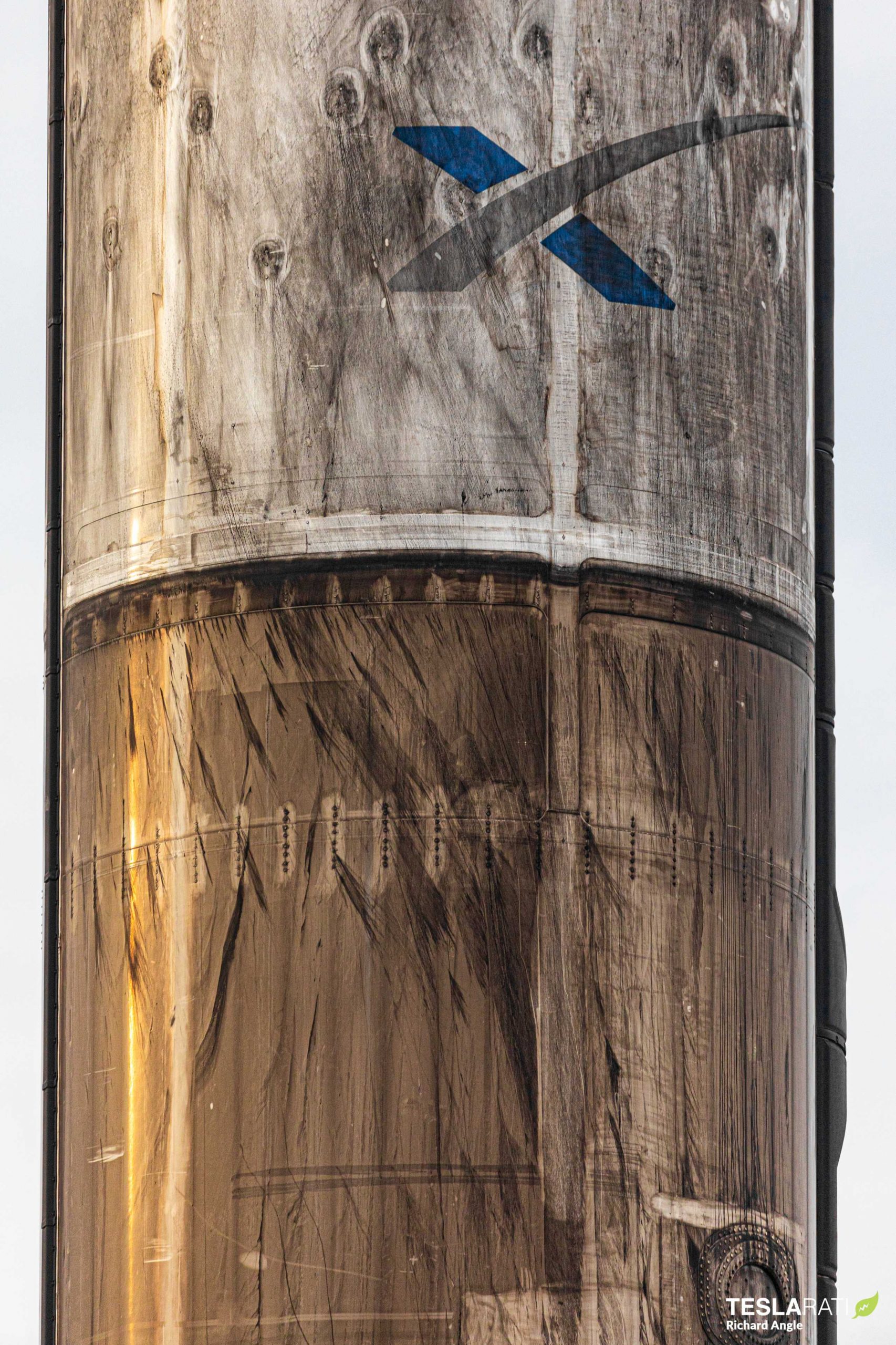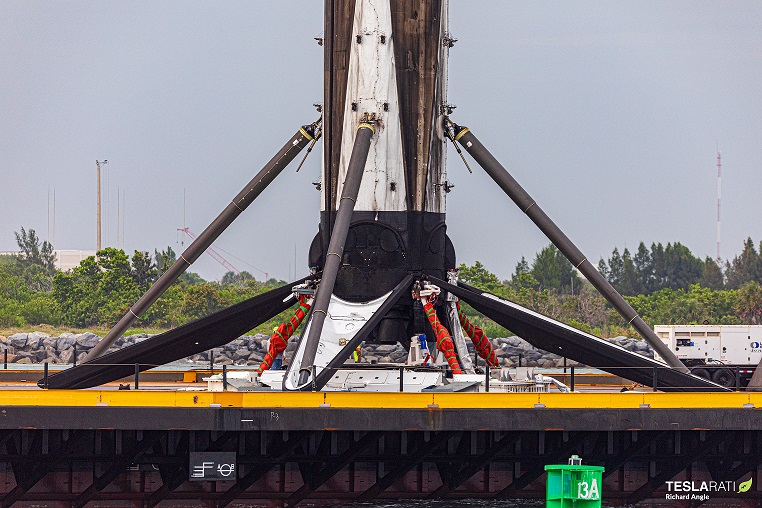
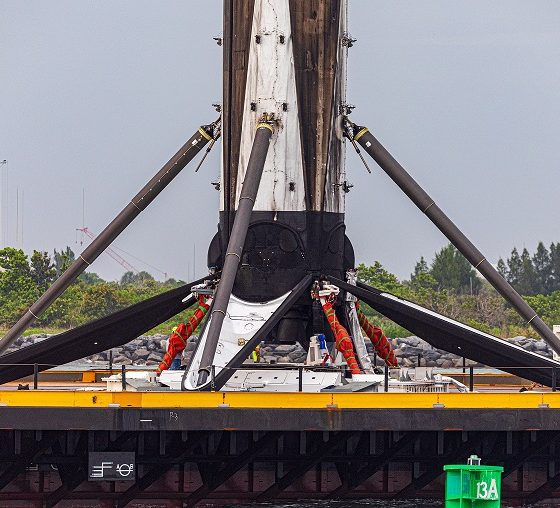
News
SpaceX record-setting booster returns to Port in remarkable condition (photos)
SpaceX has successfully recovered its second Falcon 9 in less than a week. Just four days after it launched, booster B1049 returned to sailed into Port Canaveral. The veteran booster is the first to launch and successfully land five times. On June 3, at 9:25 p.m. EDT (0125 GMT on June 4), B1049 took to the skies, delivering another batch of Starlink satellites into orbit.
Now, just three days after a flawless mission, the veteran rocket sailed triumphantly into port. Perched atop SpaceX’s newly remodeled drone ship, Just Read the Instructions (JRTI), B1049’s exterior was visibly more charred after its most recent trip through the atmosphere. This successful landing marks the first mission that JRTI was active in the Atlantic Ocean, as well as the third successful sea recovery in a row for SpaceX.
So far this year, SpaceX has successfully launched nine boosters this year. All but two of them have been recovered—two failed to land on the drone ship. One of those botched attempts was due to some residual cleaning agents trapped inside the engine. That booster, B1048, was SpaceX’s only other booster (so far) to fly five times.
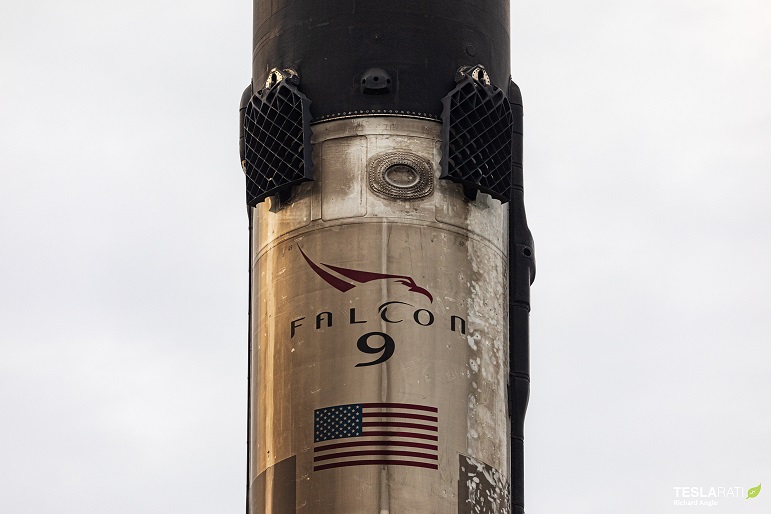
But it surely won’t be the last. B1051 has already completed four successful missions and could see flight again soon. SpaceX has at least two other launches planned for June, including another Starlink launch and the launch of a GPS satellite for the Air Force. That flight will be on a new booster, B1060, per the Air Force’s request.
As it stands now, government payloads require SpaceX to use a new booster, versus a previously flown one. That was also the case for NASA’s commercial crew program. On May 30, astronauts Bob Behnken and Doug Hurley flew to the International Space Station atop a Falcon 9 rocket. The booster, which returned to Port just a few days ago, what a shiny new booster. However, in a recent development, NASA amended the agreement, saying that SpaceX could use previously flown boosters as well as reuse its Crew Dragon spacecraft.
Currently, SpaceX reuses its cargo version of Dragon, but each upgraded cargo (and Crew) variant can be reused as many as five times. Each booster is currently rated for ten flights, with minimal refurbishments in between.
Flying for the 5th time, the #SpaceX #Falcon9 launches from SLC-40 to bring another batch of #Starlink sats to orbit! The first stage was also recovered, marking the first time a booster has landed after 5 flights! pic.twitter.com/KcsNecEoI3
— Richard Angle (@RDAnglePhoto) June 4, 2020
SpaceX’s fleet of veteran rockets has dwindled a bit, with the loss of B1048 and B1056. Those losses came on the heels of two planned expenditures: B1046 and B1047. B1046was purposefully detonated as part of the company’s In-flight Abort test that occurred in January. That test was a lead up to the Demo-2 mission and proved that SpaceX’s launch escape system worked while B1047 carried the AMOS-17 satellite into orbit and was expended after depositing the satellite into space.
However, the California-based rocket builder should have some new Falcons rolling off the assembly line this summer, which will help support its ambitious Starlink launch manifest. This year, SpaceX has launched six Starlink missions, with at least one more planned for June, possibly two.
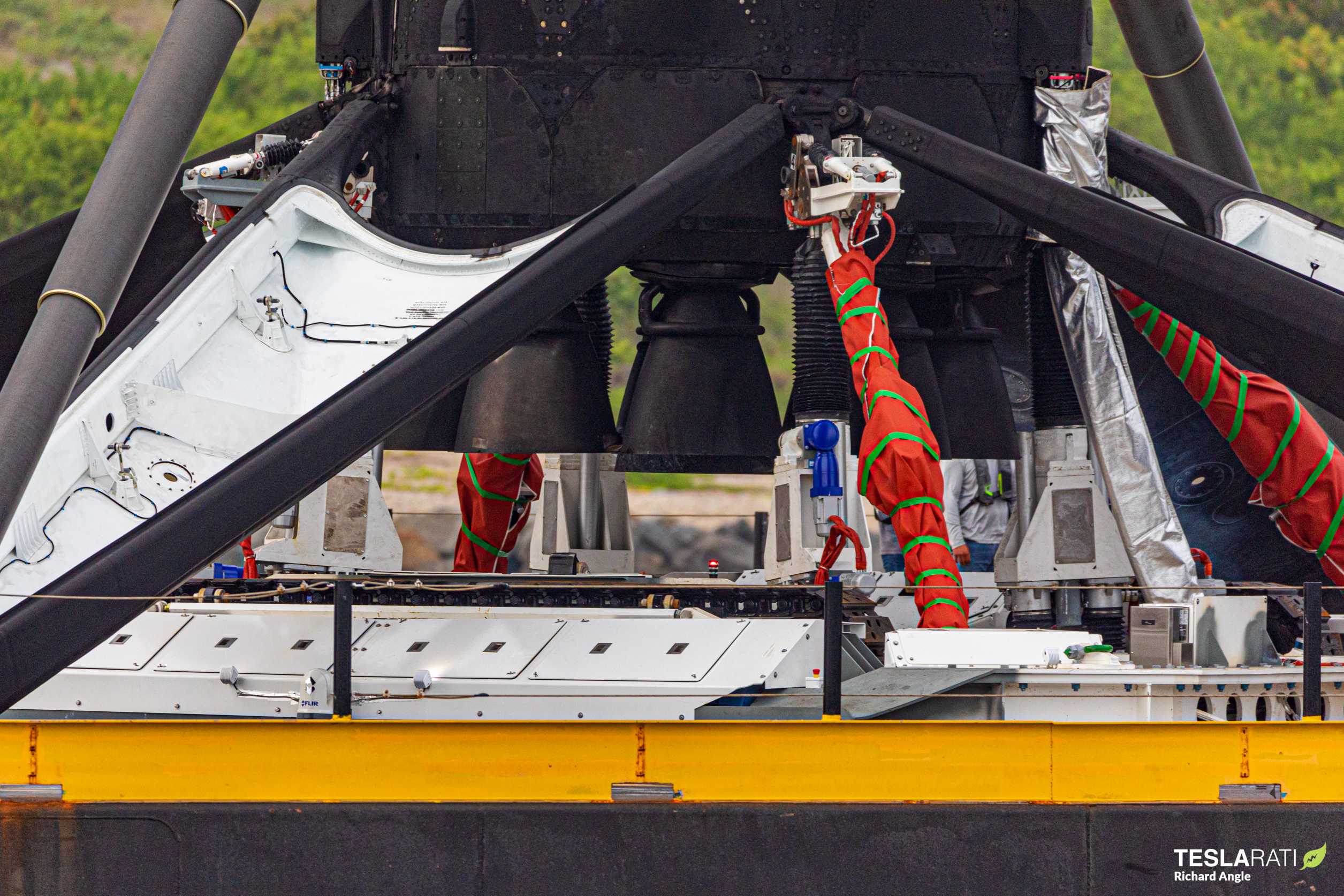
To date, SpaceX has launched a total of 482 Starlink satellites, but the company needs between 400-800 satellites on orbit to begin rolling out minimal coverage. To provide the coverage it wants, SpaceX is going to have to keep up the launch pace. And to do so, it will test the reusability factor of its rockets.
So far, we’ve seen two rockets fly five times, but when will B1049 fly a sixth time? How soon will we see a booster reach the 10-flight mark? What sort of refurbishments will it need then? With many more Starlink flights on deck, it will be interesting to see which boosters fly on which missions.

Elon Musk
SpaceX issues statement on Starship V3 Booster 18 anomaly
The incident unfolded during gas-system pressure testing at the company’s Massey facility in Starbase, Texas.

SpaceX has issued an initial statement about Starship Booster 18’s anomaly early Friday. The incident unfolded during gas-system pressure testing at the company’s Massey facility in Starbase, Texas.
SpaceX’s initial comment
As per SpaceX in a post on its official account on social media platform X, Booster 18 was undergoing gas system pressure tests when the anomaly happened. Despite the nature of the incident, the company emphasized that no propellant was loaded, no engines were installed, and personnel were kept at a safe distance from the booster, resulting in zero injuries.
“Booster 18 suffered an anomaly during gas system pressure testing that we were conducting in advance of structural proof testing. No propellant was on the vehicle, and engines were not yet installed. The teams need time to investigate before we are confident of the cause. No one was injured as we maintain a safe distance for personnel during this type of testing. The site remains clear and we are working plans to safely reenter the site,” SpaceX wrote in its post on X.
Incident and aftermath
Livestream footage from LabPadre showed Booster 18’s lower half crumpling around the liquid oxygen tank area at approximately 4:04 a.m. CT. Subsequent images posted by on-site observers revealed extensive deformation across the booster’s lower structure. Needless to say, spaceflight observers have noted that Booster 18 would likely be a complete loss due to its anomaly.
Booster 18 had rolled out only a day earlier and was one of the first vehicles in the Starship V3 program. The V3 series incorporates structural reinforcements and reliability upgrades intended to prepare Starship for rapid-reuse testing and eventual tower-catch operations. Elon Musk has been optimistic about Starship V3, previously noting on X that the spacecraft might be able to complete initial missions to Mars.
Investor's Corner
Tesla analyst maintains $500 PT, says FSD drives better than humans now
The team also met with Tesla leaders for more than an hour to discuss autonomy, chip development, and upcoming deployment plans.

Tesla (NASDAQ:TSLA) received fresh support from Piper Sandler this week after analysts toured the Fremont Factory and tested the company’s latest Full Self-Driving software. The firm reaffirmed its $500 price target, stating that FSD V14 delivered a notably smooth robotaxi demonstration and may already perform at levels comparable to, if not better than, average human drivers.
The team also met with Tesla leaders for more than an hour to discuss autonomy, chip development, and upcoming deployment plans.
Analysts highlight autonomy progress
During more than 75 minutes of focused discussions, analysts reportedly focused on FSD v14’s updates. Piper Sandler’s team pointed to meaningful strides in perception, object handling, and overall ride smoothness during the robotaxi demo.
The visit also included discussions on updates to Tesla’s in-house chip initiatives, its Optimus program, and the growth of the company’s battery storage business. Analysts noted that Tesla continues refining cost structures and capital expenditure expectations, which are key elements in future margin recovery, as noted in a Yahoo Finance report.
Analyst Alexander Potter noted that “we think FSD is a truly impressive product that is (probably) already better at driving than the average American.” This conclusion was strengthened by what he described as a “flawless robotaxi ride to the hotel.”
Street targets diverge on TSLA
While Piper Sandler stands by its $500 target, it is not the highest estimate on the Street. Wedbush, for one, has a $600 per share price target for TSLA stock.
Other institutions have also weighed in on TSLA stock as of late. HSBC reiterated a Reduce rating with a $131 target, citing a gap between earnings fundamentals and the company’s market value. By contrast, TD Cowen maintained a Buy rating and a $509 target, pointing to strong autonomous driving demonstrations in Austin and the pace of software-driven improvements.
Stifel analysts also lifted their price target for Tesla to $508 per share over the company’s ongoing robotaxi and FSD programs.
Elon Musk
SpaceX Starship Version 3 booster crumples in early testing
Photos of the incident’s aftermath suggest that Booster 18 will likely be retired.
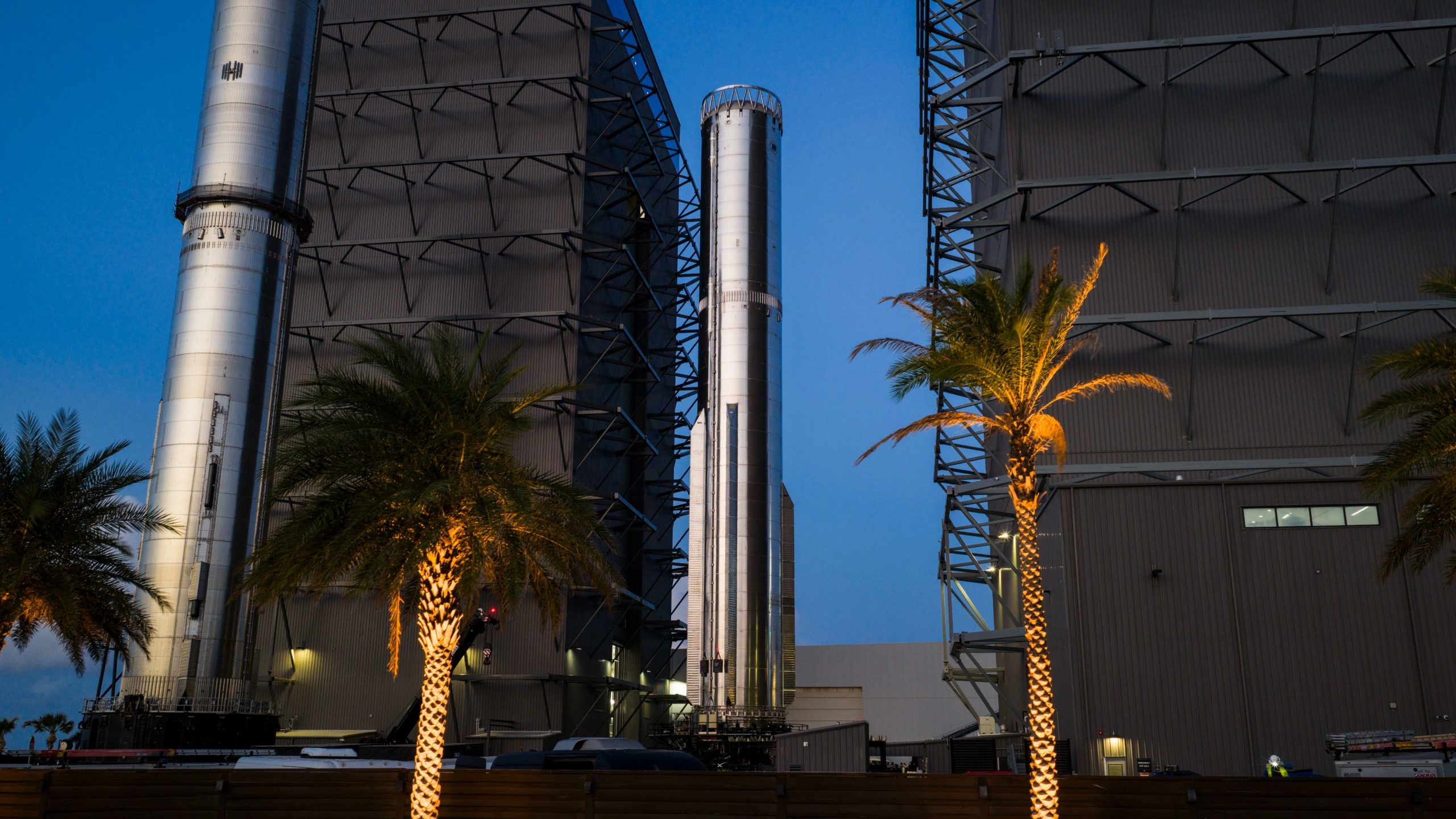
SpaceX’s new Starship first-stage booster, Booster 18, suffered major damage early Friday during its first round of testing in Starbase, Texas, just one day after rolling out of the factory.
Based on videos of the incident, the lower section of the rocket booster appeared to crumple during a pressurization test. Photos of the incident’s aftermath suggest that Booster 18 will likely be retired.
Booster test failure
SpaceX began structural and propellant-system verification tests on Booster 18 Thursday night at the Massey’s Test Site, only a few miles from Starbase’s production facilities, as noted in an Ars Technica report. At 4:04 a.m. CT on Friday, a livestream from LabPadre Space captured the booster’s lower half experiencing a sudden destructive event around its liquid oxygen tank section. Post-incident images, shared on X by @StarshipGazer, showed notable deformation in the booster’s lower structure.
Neither SpaceX nor Elon Musk had commented as of Friday morning, but the vehicle’s condition suggests it is likely a complete loss. This is quite unfortunate, as Booster 18 is already part of the Starship V3 program, which includes design fixes and upgrades intended to improve reliability. While SpaceX maintains a rather rapid Starship production line in Starbase, Booster 18 was generally expected to validate the improvements implemented in the V3 program.
Tight deadlines
SpaceX needs Starship boosters and upper stages to begin demonstrating rapid reuse, tower catches, and early operational Starlink missions over the next two years. More critically, NASA’s Artemis program depends on an on-orbit refueling test in the second half of 2026, a requirement for the vehicle’s expected crewed lunar landing around 2028.
While SpaceX is known for diagnosing failures quickly and returning to testing at unmatched speed, losing the newest-generation booster at the very start of its campaign highlights the immense challenge involved in scaling Starship into a reliable, high-cadence launch system. SpaceX, however, is known for getting things done quickly, so it would not be a surprise if the company manages to figure out what happened to Booster 18 in the near future.
